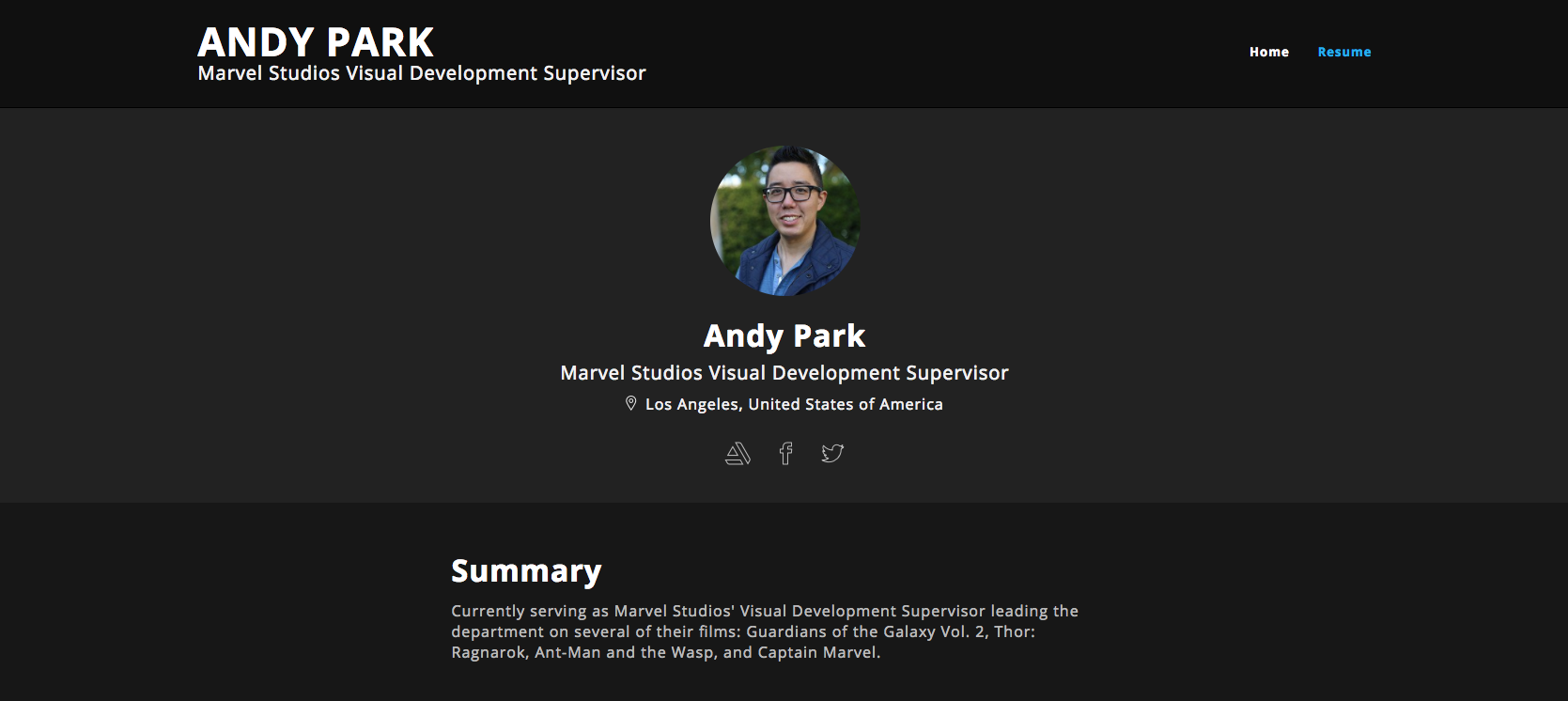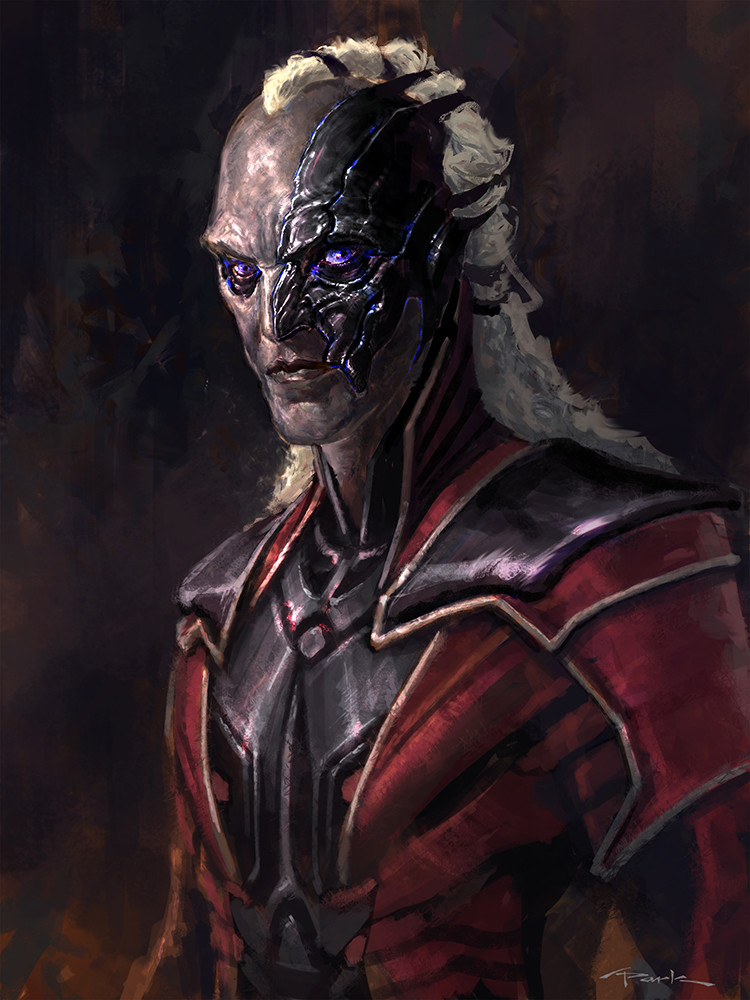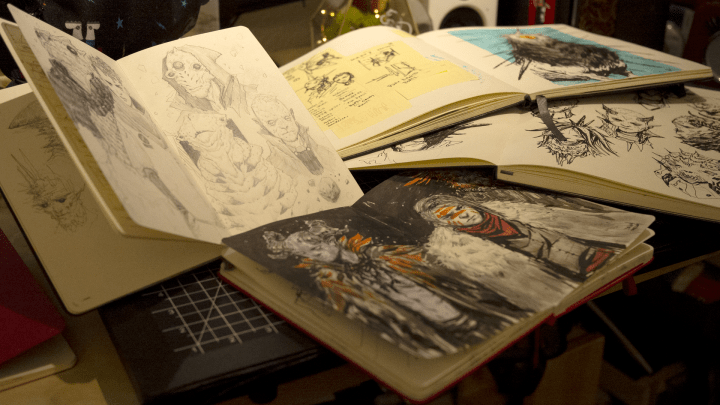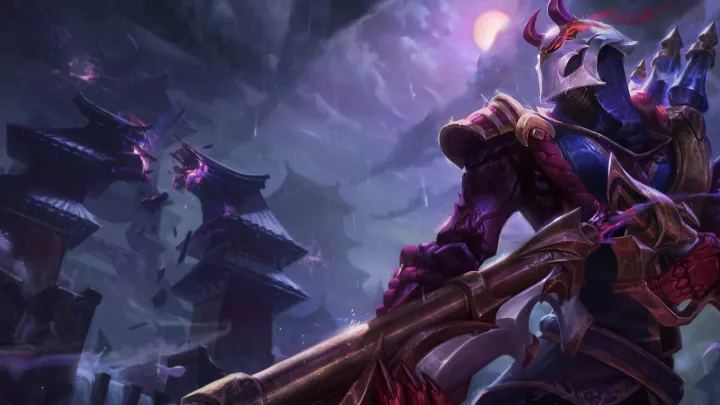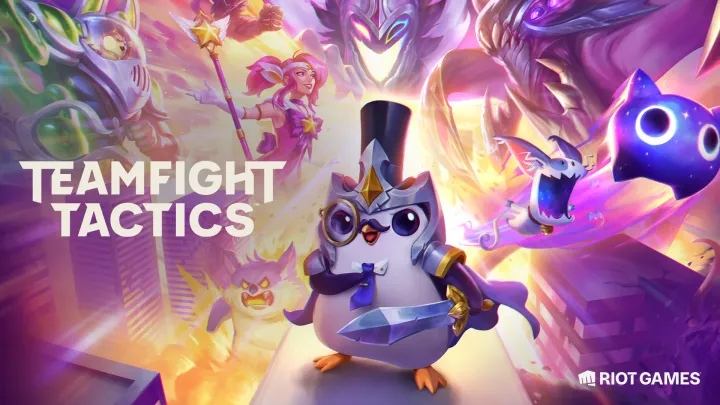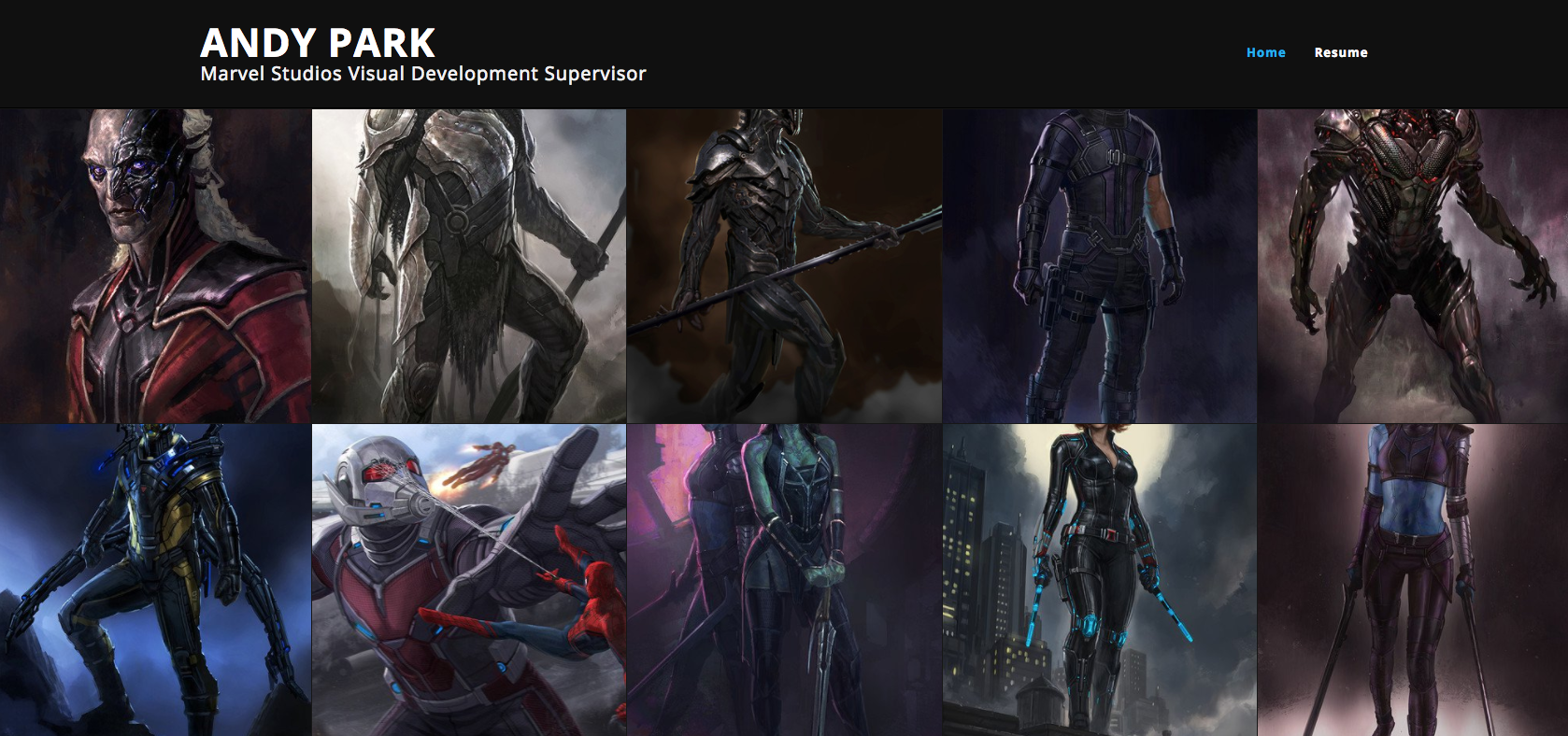
Andy Park is Marvel Studios’ Visual Development Supervisor and leads the department on several films: Guardians of the Galaxy Vol. 2, Thor: Ragnarok, Ant-Man and the Wasp, and Captain Marvel. His ArtStation Pro portfolio website has all his incredible work in one place.
Visit Andy’s ArtStation-powered website.
In this interview, he shares on his journey and experiences, most exciting collaborations and portfolio advice to aspiring Marvel artists.
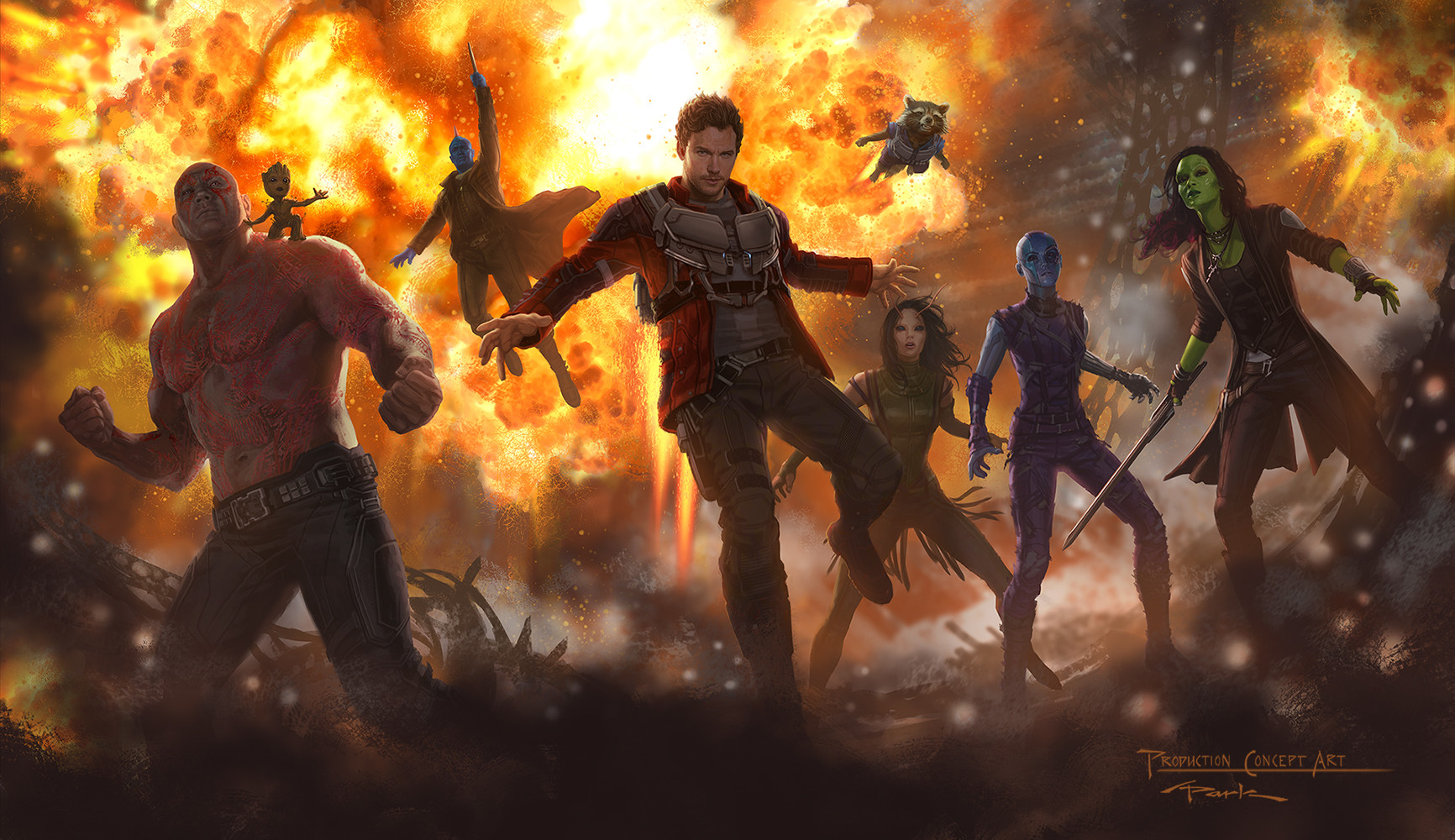
What kind of experiences and training brought you the level you’re at today?
I feel like where I am today in my career is a result of where I’ve been. I started out my career when I was 19, achieving a childhood dream of drawing comic books. I was hired by Image Comics co-founder (and Deadpool creator) Rob Liefeld. I did that for about 2 years and then decided that I wanted an actual formal art education. Comic books were great but I was only drawing with a pencil while other people would ink and color my work. That’s the way it works in the comic book industry. I really wanted to learn how to do everything pertaining to art. I wanted to learn how to paint, how to use other mediums, how to see color, basically to expand my horizons of the possibilities of art. So I enrolled as an Illustration major at Art Center College of Design in Pasadena, California. I always say that that was the best career decision I’ve ever made.
I was one year away from graduating when I got an offer to draw a new comic book series based on the hit video game Tomb Raider. I knew this was going to be huge in the industry so it was one of those offers I couldn’t refuse. And I was right, the #1 issue came out later that year and it became the highest grossing comic book in the industry of the entire year. I had no illusions that it was a result of me. The property was just ripe to be introduced to comic books. I drew Tomb Raider from issues #1 through #20. It was a great experience being on a book for that long.
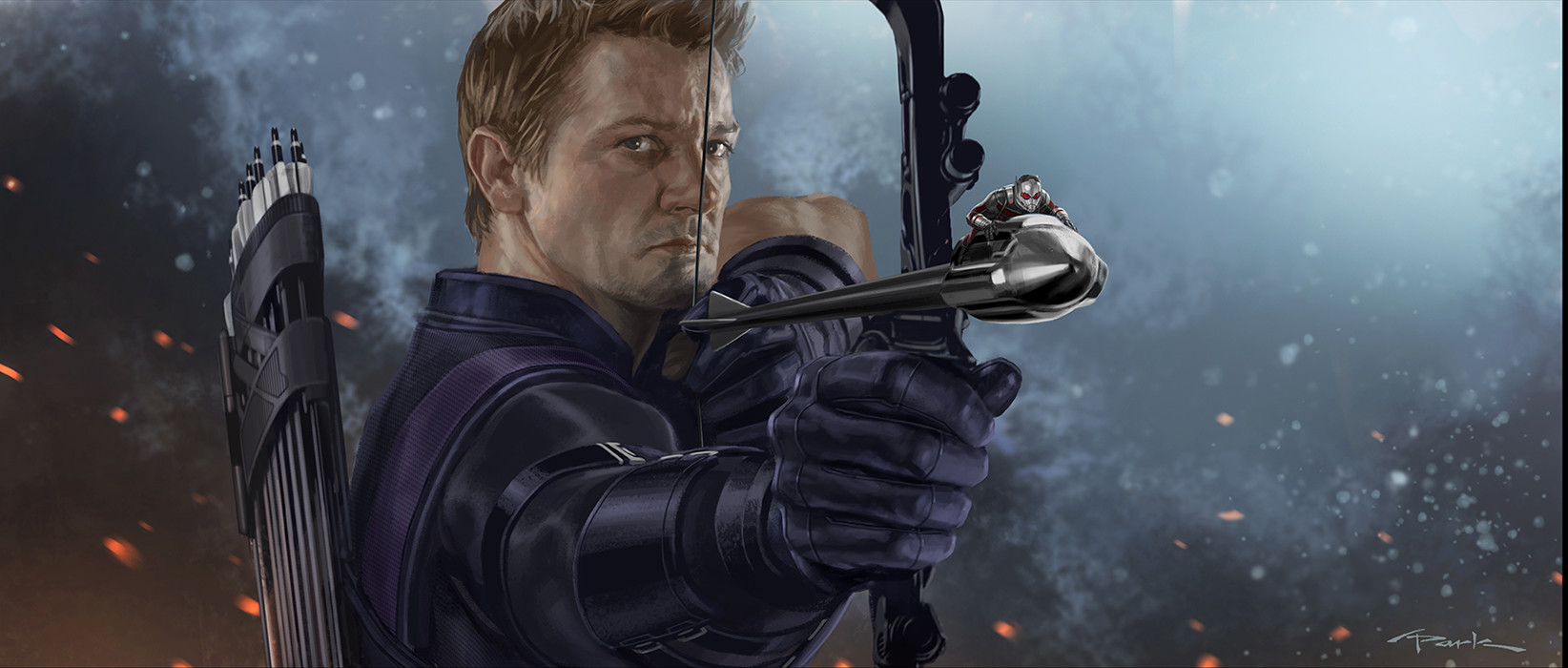
But, I began to have that creative itch again. I was once again only drawing with a pencil, having a great time but missing the newly learned skills I attained going to art school. By this time, the internet was full blown and there were more and more digital artists emerging, and with that the idea of the concept artist. I think I pretty much knew that that was the direction I wanted to go in but I only learned traditional real painting skills at school. I had to teach myself how to paint digitally and back then, there weren’t a lot of tutorials or classes you could take. I pretty much had to figure it out and build a portfolio of work showing that I could paint digitally and design characters, environments, and the like. I knew I couldn’t just show my Tomb Raider work and land a concept art job. I had to show that I could design and paint in a realistic manner. So while I was working in comic books, I started to practice and paint designs and images that would become my concept design portfolio.
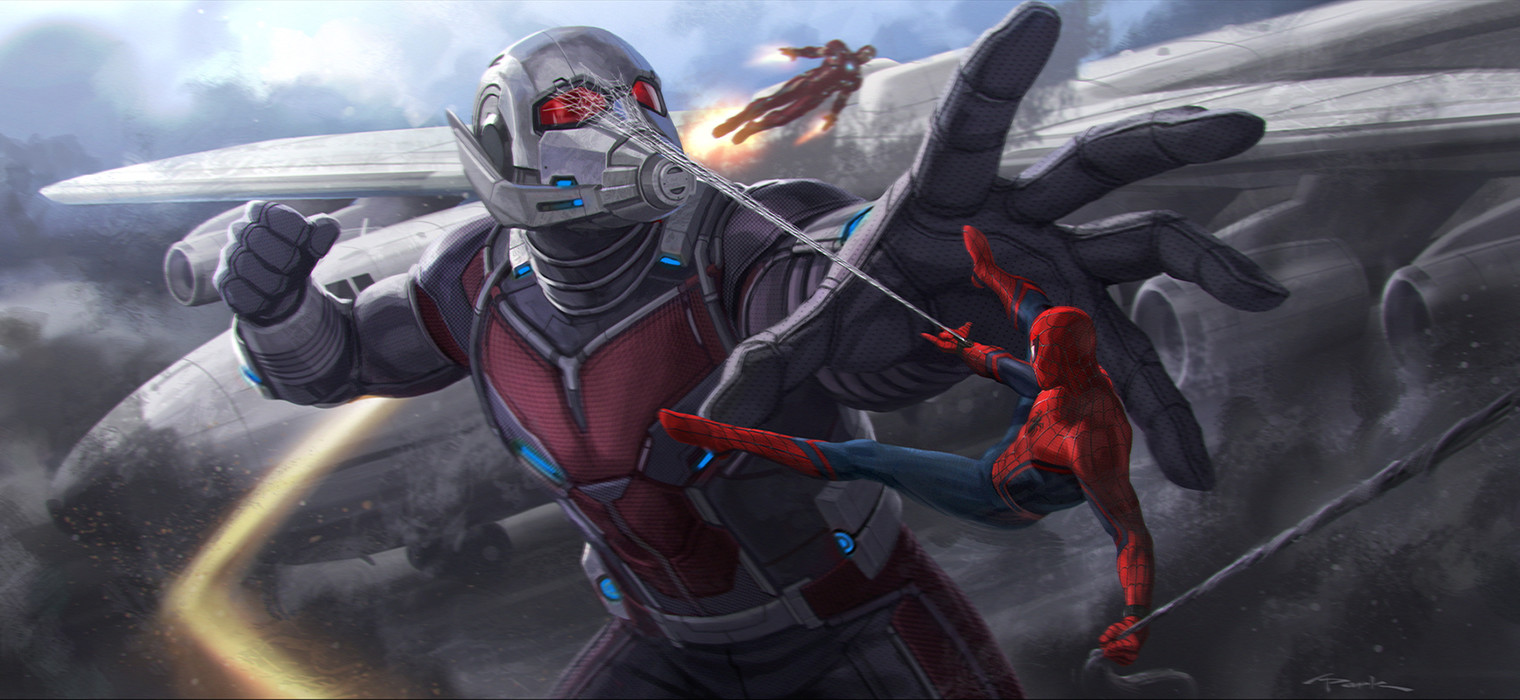
I landed my first concept art job at Sony Santa Monica to work on God of War 2. I worked there for 5 years and it was there that I feel like my art took a big jump forward. I definitely attribute that to working alongside such amazing artists, first and foremost to Charlie Wen. He hired me and I see him as my mentor. Getting to work with him has taught me so much. And then there are the other amazing artists I learned so much from: Scott Seeto, Cecil Kim, Dwayne Turner, Erik San Juan, Izzy Medrano, Andrew Kim, and Jung Park. Just like during my art school days, in a lot of ways, I feel like I learned even more from my fellow classmates, or in this case my co-workers, than I did from my teachers.
Eventually, I left Sony to work at Marvel Studios and was hired by Ryan Meinerding and Charlie Wen (who left Sony years before) to join the newly formed Visual Development Department. I’ve now been here for over 7 years and just like at Sony, working alongside so many amazing artists has pushed me artistically in ways I couldn’t have done on my own. I’m blessed to work alongside so many great talents like Jackson Sze, Rodney Fuentebella, Anthony Francisco, and dozens of other freelance artists through the years.
So that’s my really long-winded answer. I’m at where I am today because of all these people and experiences.
I will add that throughout these years I have taken classes and gone through tutorials to continue brushing up on new skills. I feel it’s necessary to never stop being a student at heart. As you can tell from my story, that creative itch never does seem to goes away. But I wouldn’t have it any other way.
Tell us about one of your most exciting projects.
One of my most exciting projects has to be the one I’ve been working on for the past year, Ant-Man and the Wasp. I’m currently Marvel Studios Visual Development Supervisor and what that means is that I lead the department of concept artists that design the characters and do keyframe illustrations (key story moments) that help the studio, director, & all other departments envision what our film could look like.

I had the honor of designing several characters in the film including the headliners, Ant-Man and Wasp. So along with designing them, I work alongside the Costume Designer (Louise Frogley) and Costume Prop Supervisor (Ivo Coveney) to help make the costumes for real to be worn by the actors. This was a great experience and collaboration working with so many talented costume makers and prop builders. I was in awe with seeing my design slowly come to life. Every brush stroke I make means hours and hours of work for them. I almost felt guilty (almost). But I have so much respect for this process.
After all that hard work (and not to mention many flights back and forth to Atlanta, Georgia) I got to see the suits on Paul Rudd and Evangeline Lilly (among other actors). When I first saw the suits on them I felt like a little kid seeing a real-life superhero for the first time. I think Paul and Evangeline could see it in my eyes. But it’s even more gratifying when I see their eyes light up in excitement over what they look like. They really become larger than life superheroes.
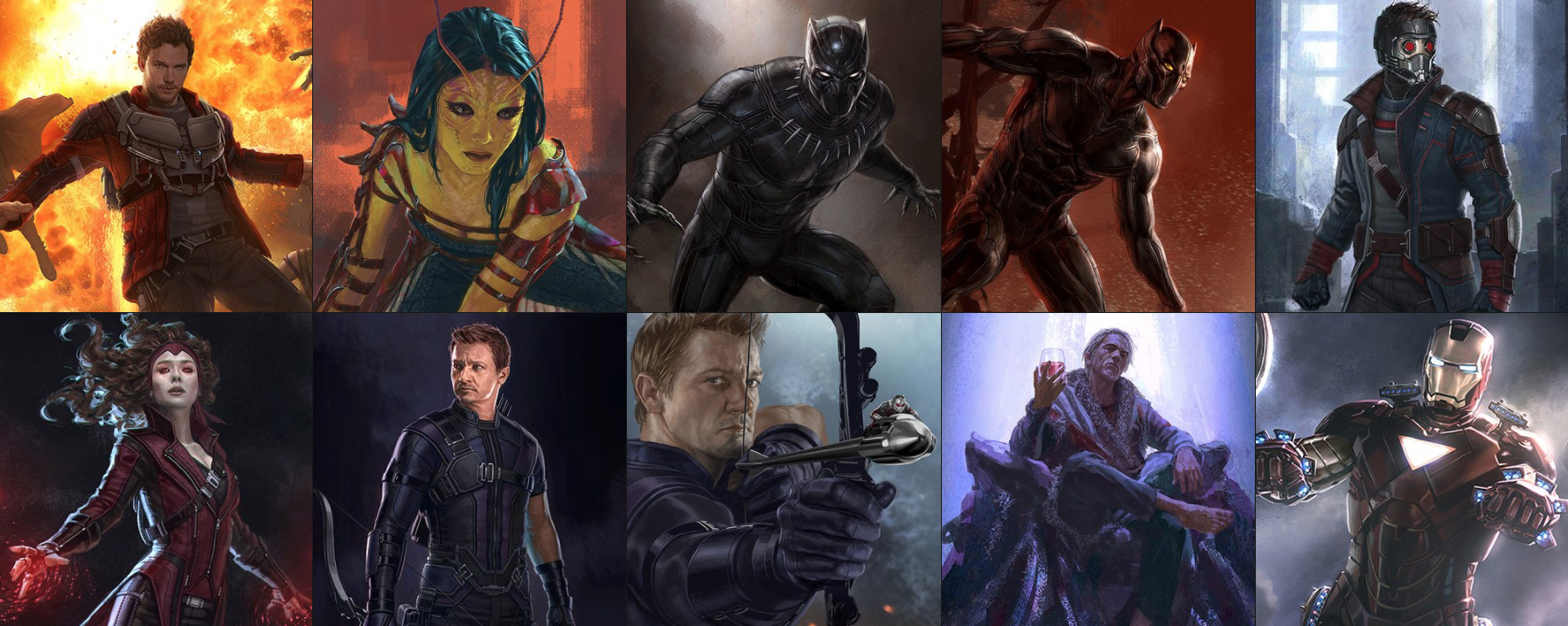
The other aspect of my job as Supervisor that is so gratifying is that I get to lead a group of amazing artists. They make my job easy because I tell them what to design and they always deliver above and beyond what is asked. When I present all of our work to the director (Peyton Reed) and the executives at Marvel Studios I always can be confident due to their amazing work. So a shoutout to the artists on this project: Jackson Sze, Rodney Fuentebella, Anthony Francisco, Adam Ross, Tully Summers, Ian Joyner, Aleksi Briclot, and Stephen Schirle.
I have to add that what made this film so great to work on was the amazing director Peyton Reed and great producer Stephen Broussard. These two made working on this film a complete pleasure. It didn’t really feel like work. We were kids on a big (& expensive) play date.
What do you think makes a portfolio stand out?
I think there are 2 main things that make a portfolio stand out:
1) Strong solid foundational skills – meaning good drawing/painting skills, and a firm grasp of color, composition, anatomy, gesture, etc.
2) Strong design ability– designs that have a voice, that are believable, that are well thought out and show an understanding of the problem/s that need to be solved, that tell a story, and that are unique. That’s my simple answer to how a portfolio can stand out. There’s so much competition out there so clients are looking for that “WOW” factor. And these 2 things need to be there immediately for a viewer to want to look more than just 2 seconds at your portfolio among the sea of portfolios out there.
Advice to aspiring Marvel artists:
To those aspiring artists that want to work at Marvel Studios, I would tell them to focus their portfolio on what they love the most. By that, I mean that if you love to design characters make your portfolio the best character portfolio you could make it. If you love to design sets or environments, then make your portfolio about that. If you love to design vehicles, weapons, and props then make it the best hard surface design portfolio you could make it.
I meet many young artists that think that they need to show a portfolio that showcases their ability to do a little bit of everything.
The truth is, most artists (including myself) can’t do everything. We all have strengths and that usually is the area of focus that we love. For me it’s characters. So I’ll make my portfolio clearly a character design portfolio. It needs to show a focus because companies almost never look for an artist that can do everything. They look for an artist that can do a specific thing that they need at that time. The good news is that you can spend your time getting better at one (or two) thing rather than feeling overwhelmed in having to be good at everything. I hope this advice helps someone out there. Good luck!
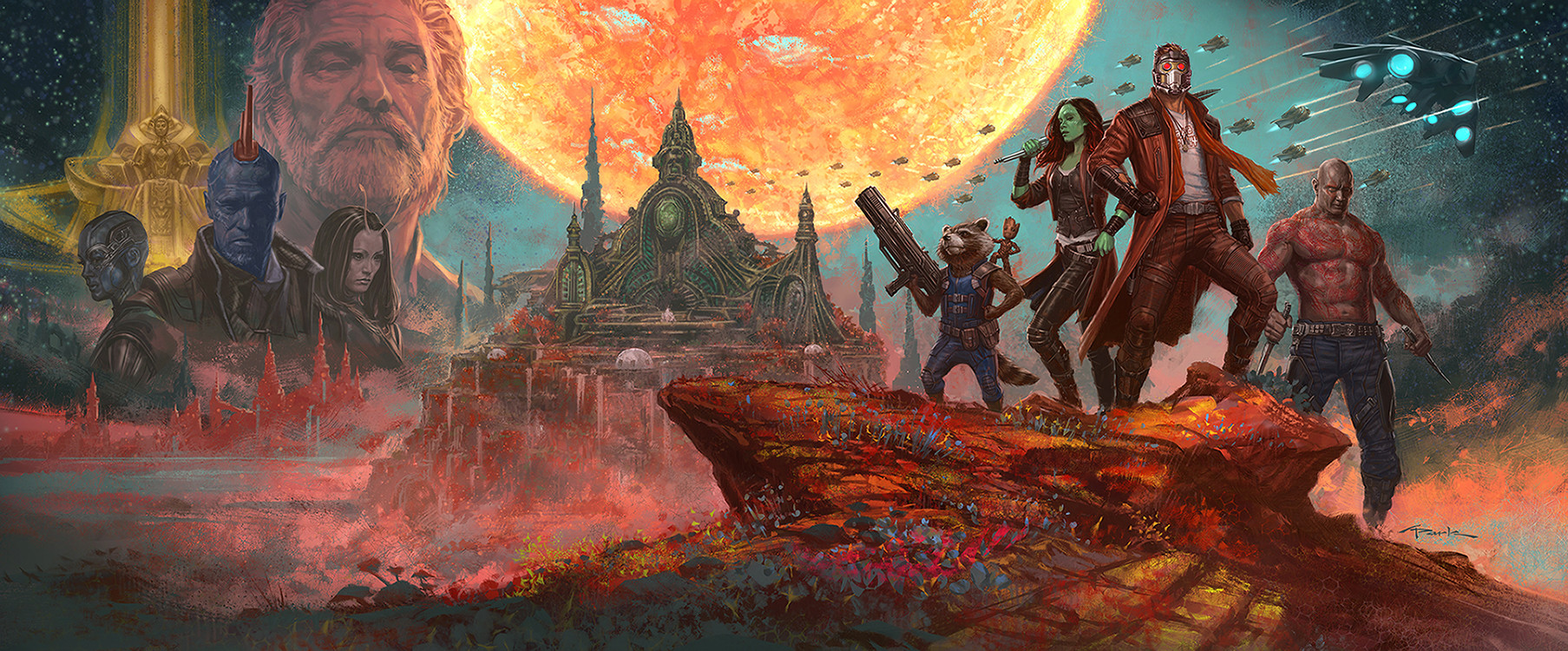
See more of Andy’s work on his portfolio website and follow him on social media at @andyparkart. To learn more about ArtStation Pro websites, see here.




